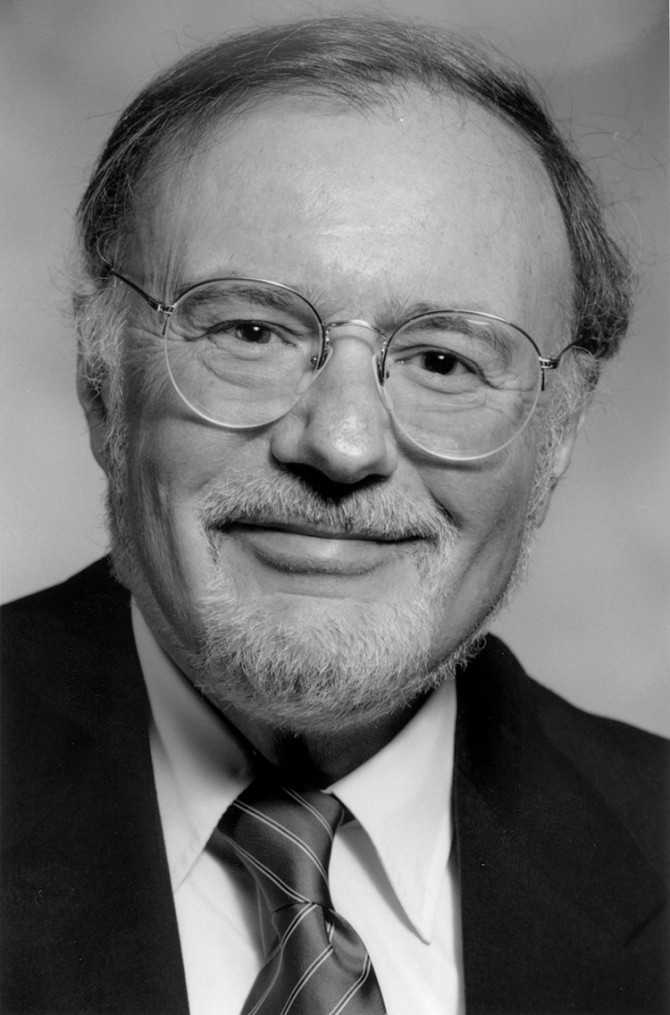Maury Tigner, accelerator builder and adviser on Chinese science, is named director of Cornell's particle research lab
By David Brand
Maury Tigner, who two decades ago helped design and build the half-mile-circumference accelerator at Cornell, has been named the next director of the operator of the huge device, the Laboratory of Nuclear Studies (LNS), one of the world's leading centers for elementary particle research. Tigner, will succeed Karl Berkelman, the Goldwin Smith Professor of Physics, who steps down June 30, 2000.
LNS operates the Cornell Electron Storage Ring (CESR), an electron-positron colliding beam accelerator. With the Laboratory of Atomic and Solid State Physics, LNS is one of two research centers of the Cornell Department of Physics.
Tigner was professor of physics at Cornell from 1977 to 1994 and in his final year was named the first holder of the Hans A. Bethe Chair in Physics, a post that a serious illness forced him to relinquish. In the intervening years, as professor emeritus of physics, he has edited a major handbook on accelerator physics and engineering, and with his wife has made long visits to Beijing as a visiting scientist at the Institute of High Energy Physics as well as a senior adviser to the Chinese Academy of Sciences.
Making the announcement of Tigner's full-time return to Cornell, Robert C. Richardson, Cornell's vice provost for research, said, "We are delighted that Maury has agreed to become the director of LNS. Maury has an exceptional reputation as a physicist, accelerator design expert and leader of complex scientific projects."
Berkelman, who has been LNS director since July 1, 1985, called Tigner "one of the world's most highly respected accelerator physicists." He said, "He is the ideal choice to lead the laboratory into the next millennium. LNS has had a great past, and I expect it will have an even greater future."
Cornell physics professor Persis S. Drell, who chaired the search committee for the new director, said: "The search committee looked for candidates from the entire U.S. high-energy and accelerator-physics community. We felt there was no other individual who was better qualified and more outstanding as a candidate than Maury Tigner. We at the lab feel extraordinarily lucky to have attracted him back to Cornell. Maury is a superb scientist, a truly creative accelerator designer and a natural leader who is admired throughout the field."
Tigner steps into the directorship after a distinguished career that includes playing a leading role in the design and construction of CESR from 1977 to 1979. His most recent honor, the year 2000 recipient of the $5,000 Robert R. Wilson Prize, recently was announced by the American Physical Society (APS). The award cites Tigner's "notable contributions to the accelerator field as an inventor, designer, builder and leader, including early pioneering developments in superconducting radio-frequency systems," as well as his leadership in the construction of CESR. The prize honors the retired Cornell physics professor for whom the Wilson Laboratory, the home of LNS, is named. "The next few years will be wonderful," said Tigner about the National Science Foundation (NSF)-supported Cornell laboratory. "This is a unique time in history in that the lab is quite sure of the resources it will have to work with over the next four years. In the past there has been a great deal of uncertainty from one year to the next. But the NSF has appreciated the great importance of continuity for planning. This is a wonderful platform from which to approach the future."
Last April, the NSF awarded Cornell $88.2 million for the operation of CESR over 54 months.
Tigner attended the Webb Institute of Naval Architecture for two years before transferring to Rensselaer Polytechnic Institute, from which he graduated in 1958 with a B.S. in physics. He obtained his Ph.D. at Cornell in 1962, working under Robert Wilson. He has remained at Cornell for most of his career, interrupted by visiting appointments at the Deutches Elektronen Synchrotron in Hamburg, Germany, from 1972 to 1973 and again in 1993, and as the director of the Superconducting Super Collider Central Design Group at Berkeley, Calif., from 1984 to 1989.
The new LNS director is a fellow of the APS and the American Academy of Arts and Sciences and a member of the National Academy of Sciences. He has received the U.S. Department of Energy Distinguished Associate Award, the U.S. Particle Accelerator School Prize for Achievement in Accelerator Physics and Technology and the E.O. Lawrence Memorial Prize.
CESR serves the CLEO collaboration, formed in 1977 to exploit the high-energy collisions used to study heavy quarks and lepton physics. The collaboration numbers about 200 physicists from 25 institutions. The byproduct X-ray radiation that is produced by the circulating beams also serves a community of materials scientists and molecular biologists through the Cornell High Energy Synchrotron Source (CHESS), which shares Wilson Laboratory with LNS.
Related World Wide Web sites:
Media Contact
Get Cornell news delivered right to your inbox.
Subscribe